April 4, 2023
The entire month of March gave the Big Yard a total of 50 species of birds. We surpassed that number by four today as the spring migrants make their way north. The browns of winter finches and siskins give way to vibrancy: to the cadmium yellow and mandarin and cochineal of the warblers, orioles and tanagers, to the sapphire and copper and indigo of the iridescent hummingbirds. Even the peach tree responds with color, just in time for the killer honeybees...and tonight’s blossom-busting frost.
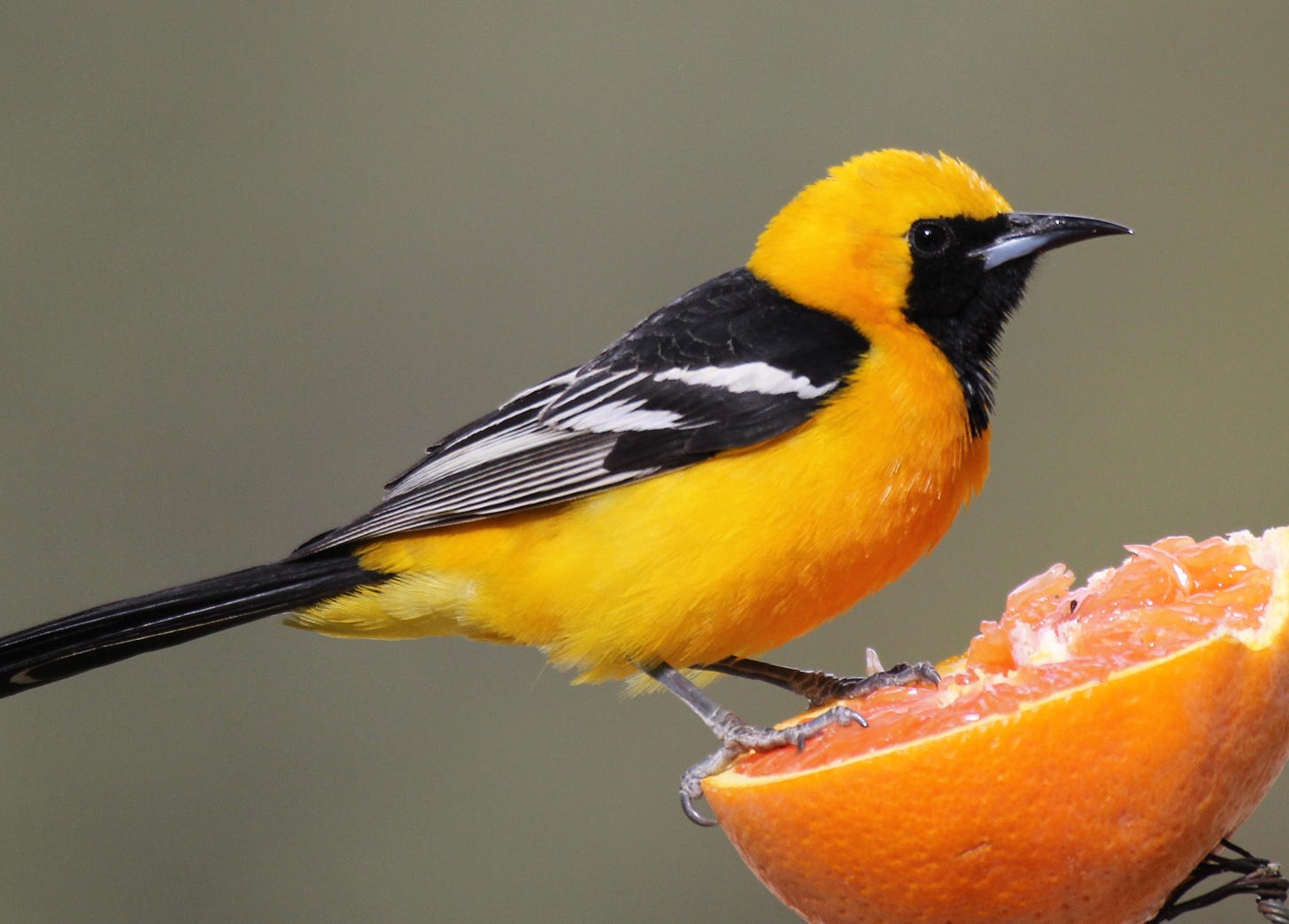
I’m reading about color in Ed Yong’s An Immense World and how animal senses reveal nature’s hidden mysteries around us. It seems our colorful planet is no accident. It’s the eyes, he says, that define nature’s palette. He points to the research about flowers and insects, how we once thought that pollinators evolved eyes that see green, blue, and ultraviolet light to discriminate flowers, except that this kind of insect “trichromacy” came first, by hundreds of millions of years...“so the latter must have evolved to suit the former. Flowers evolved colors that ideally tickle insect eyes.”
The simple act of seeing, he says, recolors our world. Eyes are living paintbrushes, and much of what we find beautiful in nature has been shaped by the vision of the animals we share the planet with. And, I think, by us too.
“Beauty is not only in the eye of the beholder,” Yong writes. “It arises because of that eye.”
I think about this as I refill the cup of grape jelly and set out fresh orange slices. The drab winter birds never got these treats. Only the brightest orioles and tanagers.
Thanks for subscribing—so much more to come as migration moves into full swing!
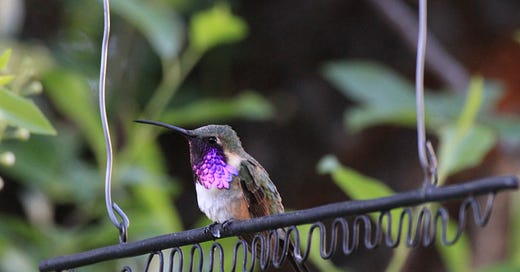



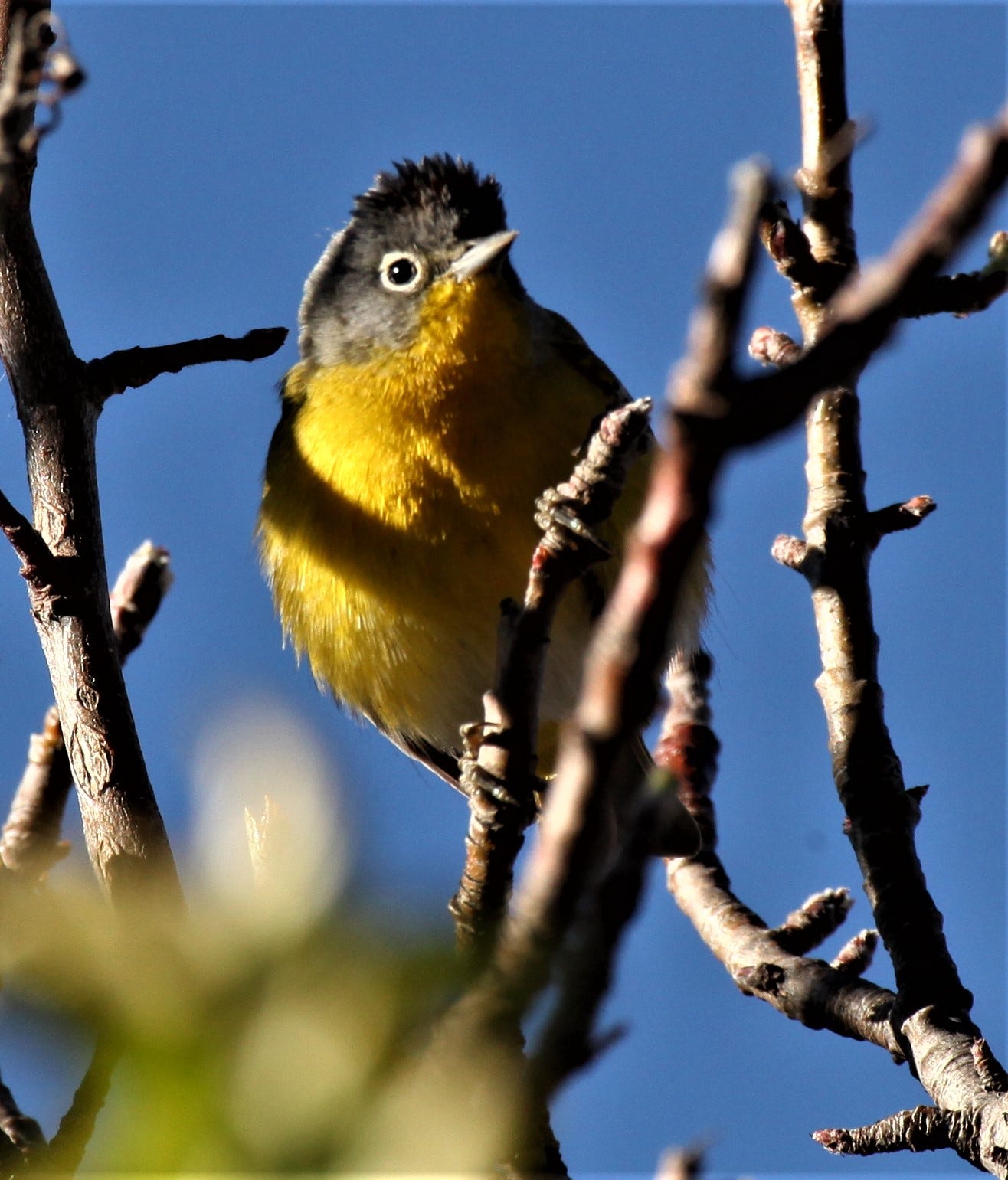
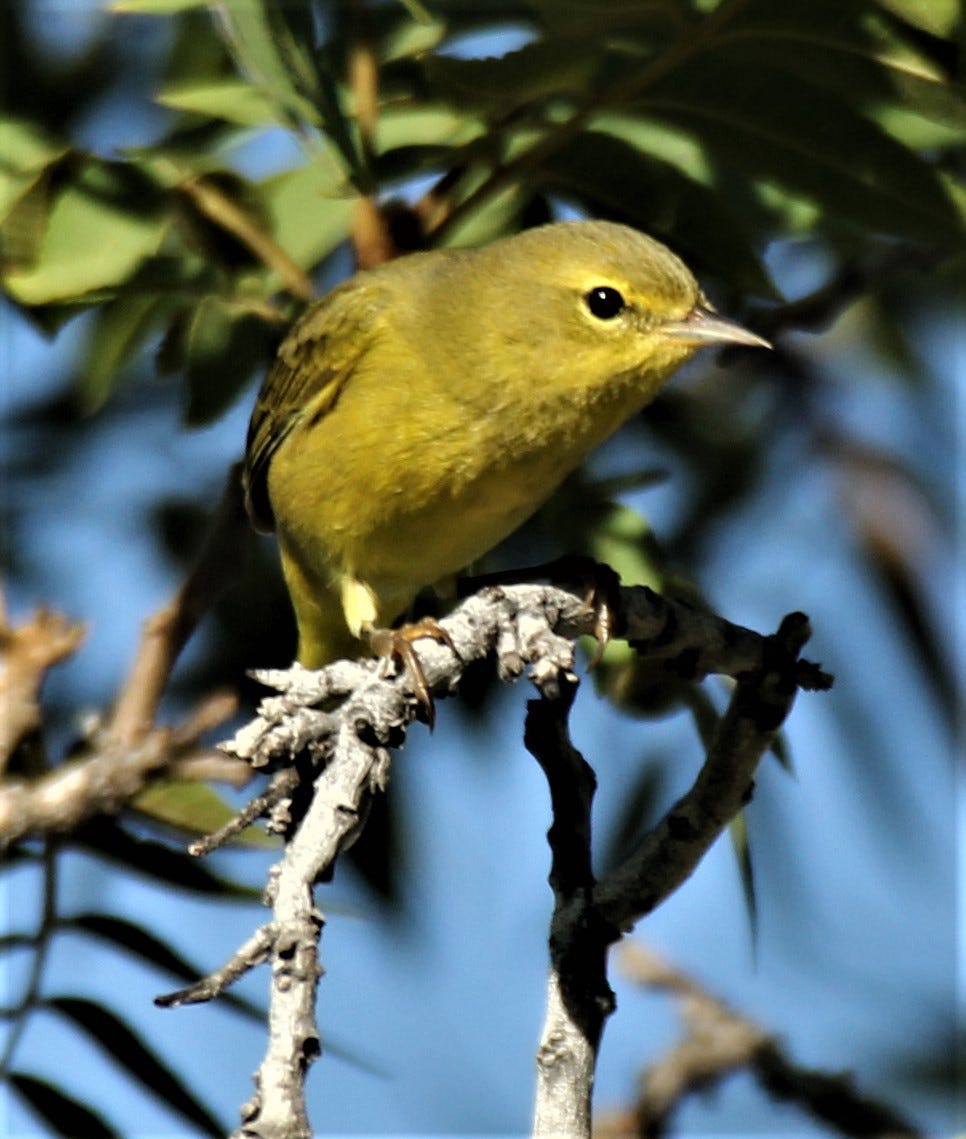
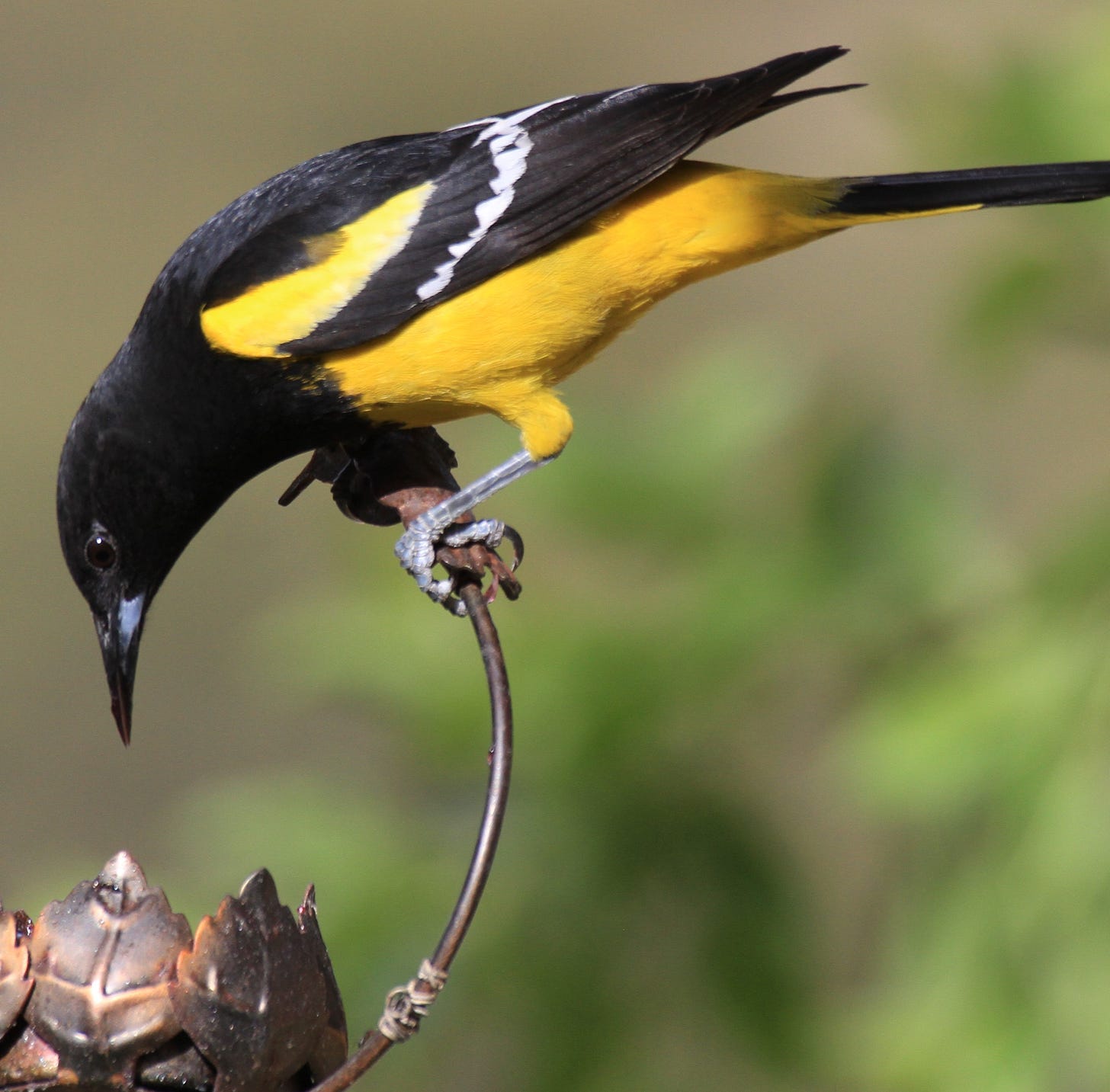
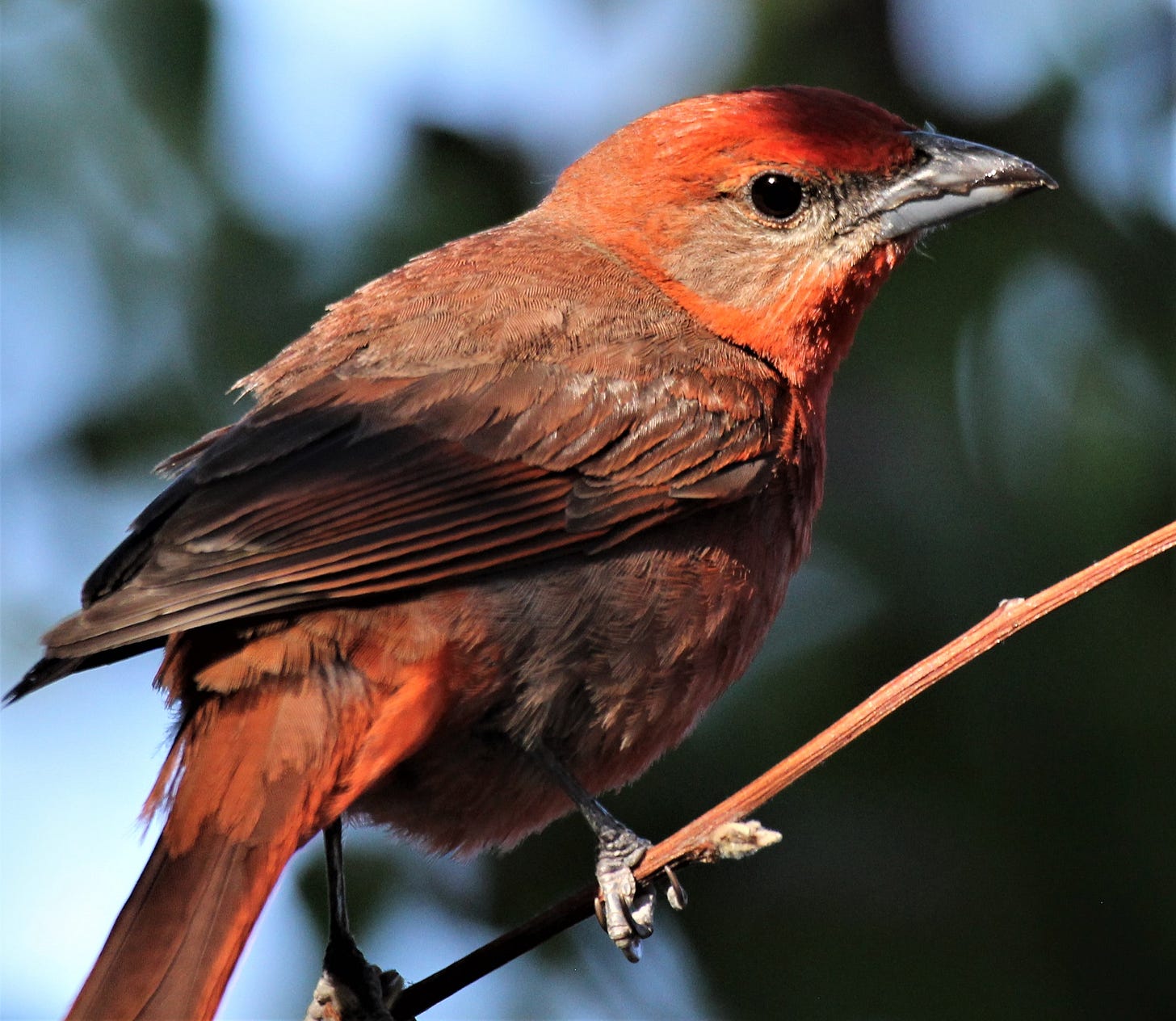
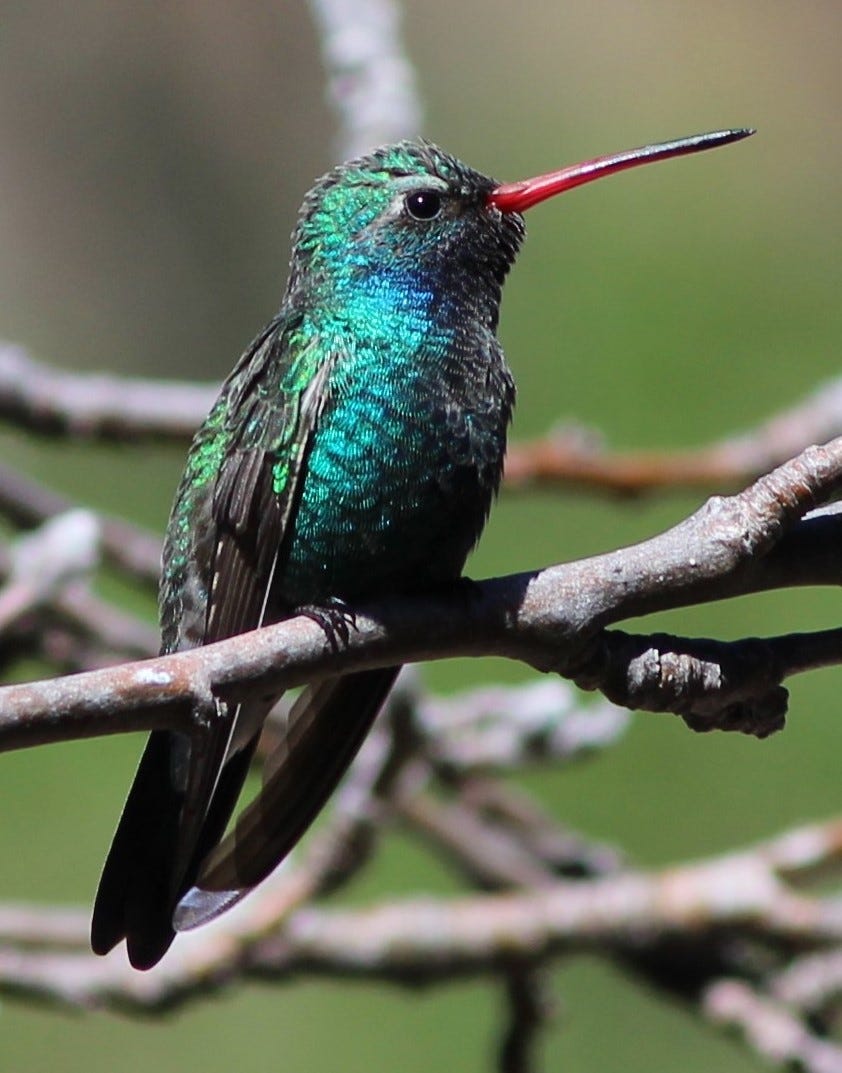
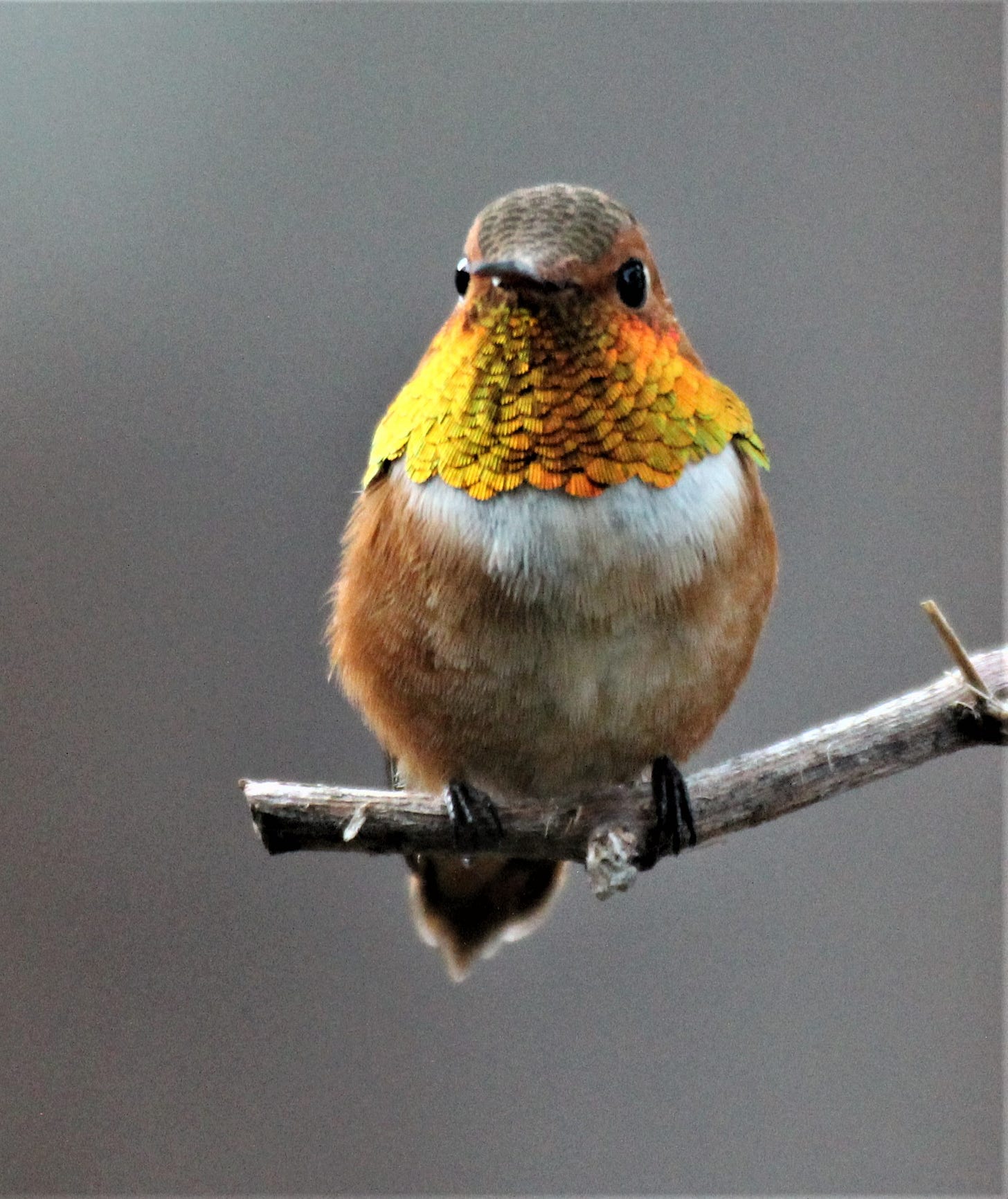
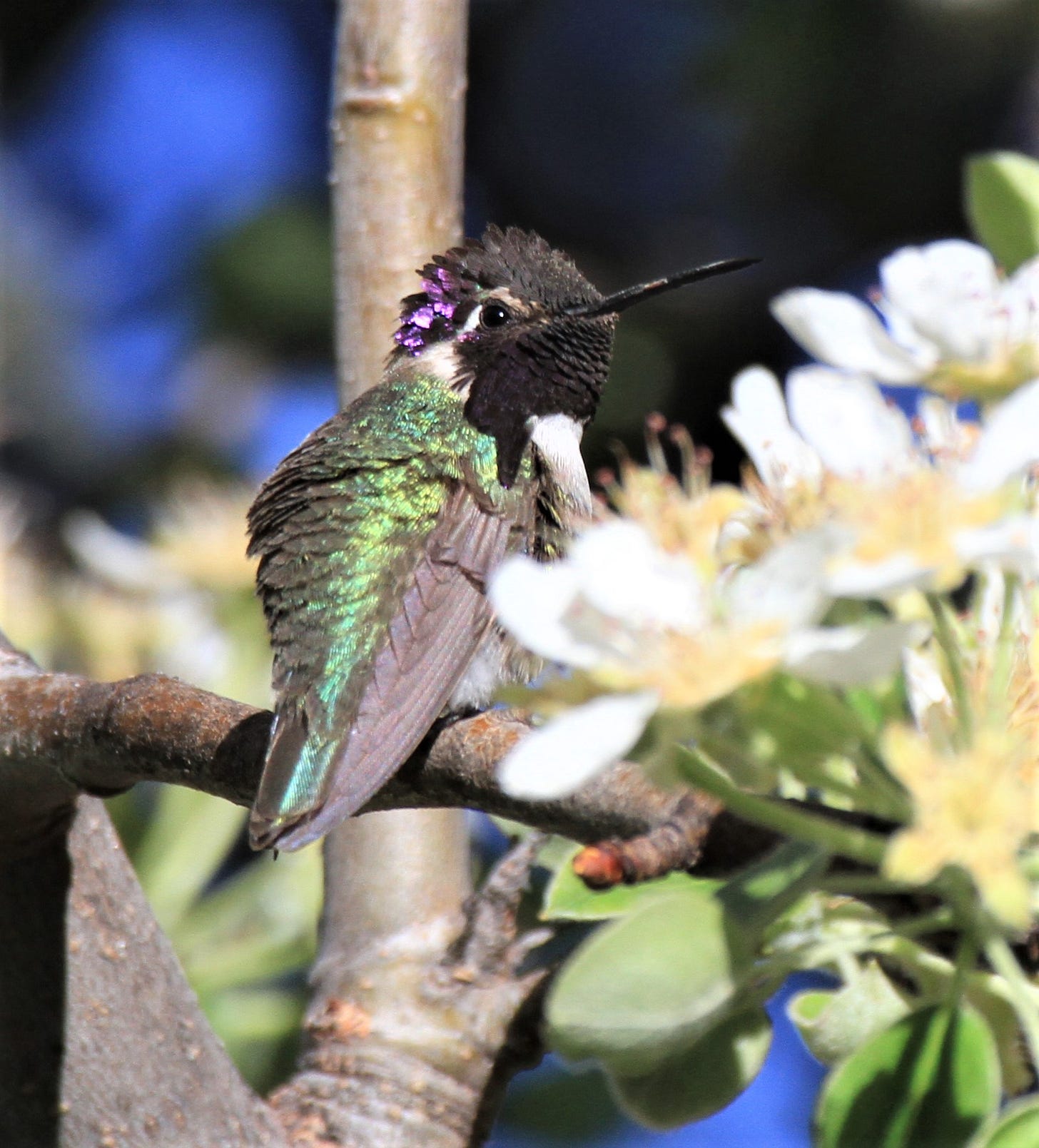
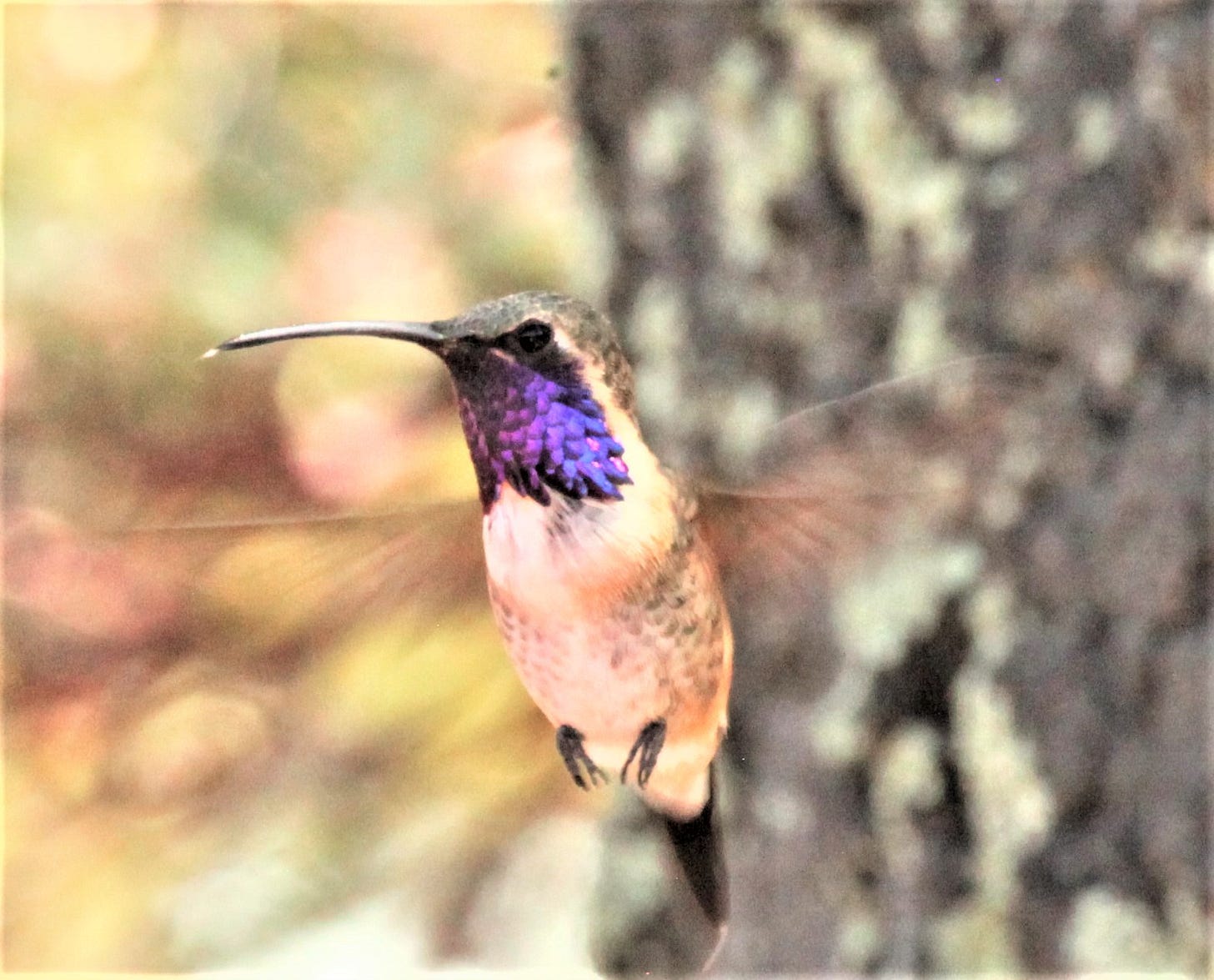
Hooded Oriole - my favourite, thank you so much for the delectable photos!
I saw photos of beautiful fluorescent colors that birds see. WOW absolutely stunning.